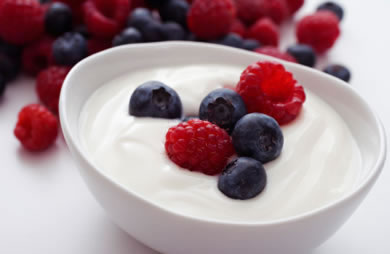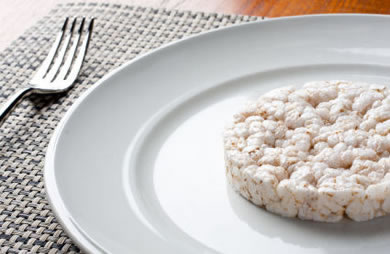|
Last week I shared a few ways grocery stores are changing to better inform their patrons. More and more stores are including NuVal Nutritional Scoring information on item shelf tags. The system is intended to reduce consumers confusion related to food package marketing labels and claims. The scientifically based NuVal measuring system can help people make nutritionally informed food choices. However, that can only happen if you understand the system. How a Food Gets a Score An Overall Nutritional Quality Index (ONQI) number is calculated to quantify the level of nutrition a food contains. The ONQI algorithm relies on the Institute of Medicine's Dietary Reference Intake values as well as the Dietary Guidelines for Americans for nutrient quantification. Over 30 nutrients are used in the algorithm calculation. Nutrition leaders, public health professionals and medical experts included the macronutrients of calories and carbohydrates as well as factoring for the quality of proteins and the types of fats (omega-3, trans, saturated) and cholesterol an item contains. Other nutritionally relevant keys such as vitamins, minerals, fiber, antioxidants, sugar, and salt are also factored in the calculation. Nutritional influence related to published scientific literature is also taken into account with the ONQI reference calculation. To score packaged foods, the nutrition facts label and ingredients lists are used as reference. Non-packaged foods like meats, produce, and seafood rely on nutrient database information. The focus of the calculation is the nutritional density of an item. It cannot factor other elements such as toxins, hormones, or bacteria that may be present so there is no influence of the presence or absence of these in the scoring. Likewise, since there is no widely corroborated evidence related to increased nutritional density for organically grown foods, growing conditions are not factors in the scoring either. Using the Scores to Shop If you know how to interpret the number, you can make nutrient wise food choices like a health professional. The scores range from 1-100 and the higher the number the richer the nutrients. By using the numbers as your guide, you can quickly scan the shelf to compare sale items to find a healthier alternative while still saving money. For instance, if your children love frozen waffles as a quick breakfast option like my teens, check for alternatives before grabbing the Eggo Homestyle Waffles. They only contain a NuVal score of 23 while the Earth's Best Homestyle Waffles score a 43. If you are trying to meet your calcium needs by eating yogurt, double check to be sure the Dannon Strawberry Yogurt you typically purchase is the most nutrient rich choice at 24. After a quick check, you may decide to try Chobani Strawberry Greek Yogurt when you find it scores a 64. How about the noodles you are selecting for your favorite lasagna recipe. Perhaps the Ronzoni Whole Wheat noodles with their score of 91 would be a good substitution for your standard selection of Prince Simply Perfect enriched noodles that only scores a 57. Be careful not to assume that the low-fat or lite version or an item will have a higher NuVal score. Since these options may also alter fiber or sugar content, they may be less nutritious overall, which gives them a lower calculated score. Use the online scoring information to help you make comparisons when you are preparing your grocery list at home. Sometimes we choose foods like Crunchy Cheetos because we enjoy them for a party and not because they only score a 5 on the NuVal system. The fact that we enjoy blueberries on our cereal AND they score a perfect 100 on the scale is a bonus. Learning how to make nutrient wise and dollar smart choices to make the most of our food dollars is important. The NuVal system can help you when you learn how to use it as a guide. Do you think this system would help you if it was in your grocery store? Do you think it would make price comparison more difficult? |
Popular Entries
More From SparkPeople
|




.png)










